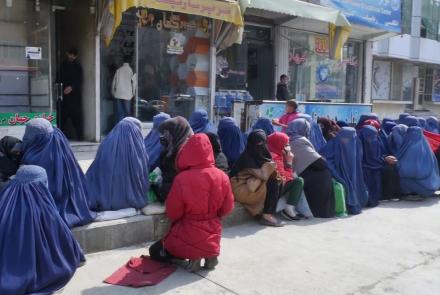The International Rescue Committee released a report highlighting the global threats of hunger and famine, and it said Afghanistan is experiencing conflict, insect plagues, drought and other climate-related crises which tend to result in food insecurity and hunger.
“East Africa, Africa’s Sahel region and Afghanistan are all currently grappling with the world’s most severe hunger crises,” the report reads.
With the suspension of international aid, the freezing of more than $9 billion Afghan assets, and the imposition of sanctions by the international community following the collapse of the former government, the humanitarian organizations estimated that more than 22 million of the country’s population need humanitarian aid.
Sanober, who lives in Kabul, is a mother of two children. Sanober said that she has worked for around six years in government departments but is now jobless.
“I used to work at the Ministry of Energy and Water. I had a salary ... but since the government collapsed, I am home,” Sanober said.
Burhan, 9, is another vulnerable child who is working on a Kabul street to support his family.
"We are two brothers and are working as shoe polishers," Burhan said.
"I come here and work from morning to evening. I make 50 to 60 Afs," said Hamza, a child laborer.
The head of the IRC, David Miliband, said there is nothing natural about famines in the 21st century.
“While a complex set of factors are driving extreme hunger, the slide into famine and mass death is man-made, driven by international inaction,” he said.
Earlier, the UNDP said that more than 22 million Afghans are estimated to need humanitarian assistance.
"It is necessary that the international aid organizations should not only rely on the reports but take practical steps toward increasing incomes and creating jobs," said Darya Khan Baheer, an economist.



Comment this post